Ford Puma vs Honda e:Ny1 – Which car suits you better?
Everyday use, family trips or long-distance drives – here’s where the differences show.
Discover whether Ford Puma or Honda e:Ny1 fits your lifestyle better.
Costs and Efficiency:
Price and efficiency are often the first things buyers look at. Here it becomes clear which model has the long-term edge – whether at the pump, the plug, or in purchase price.
Ford Puma has a distinct advantage in terms of price – it starts at 24800 £, while the Honda e:Ny1 costs 33400 £. That’s a price difference of around 8649 £.
In terms of energy consumption, the advantage goes to the Ford Puma: with 13.10 kWh per 100 km, it’s distinct more efficient than the Honda e:Ny1 with 18.20 kWh. That’s a difference of about 5.10 kWh.
As for range, the Honda e:Ny1 performs barely noticeable better – achieving up to 412 km, about 36 km more than the Ford Puma.
Engine and Performance:
Power, torque and acceleration are the classic benchmarks for car enthusiasts – and here, some clear differences start to show.
When it comes to engine power, the Honda e:Ny1 has a slightly edge – offering 204 HP compared to 168 HP. That’s roughly 36 HP more horsepower.
In acceleration from 0 to 100 km/h, the Ford Puma is minimal quicker – completing the sprint in 7.40 s, while the Honda e:Ny1 takes 7.60 s. That’s about 0.20 s faster.
In terms of top speed, the Ford Puma performs clearly perceptible better – reaching 210 km/h, while the Honda e:Ny1 tops out at 160 km/h. The difference is around 50 km/h.
There’s also a difference in torque: Honda e:Ny1 pulls slight stronger with 310 Nm compared to 290 Nm. That’s about 20 Nm difference.
Space and Everyday Use:
Beyond pure performance, interior space and usability matter most in daily life. This is where you see which car is more practical and versatile.
Both vehicles offer seating for 5 people.
In curb weight, Ford Puma is distinct lighter – 1316 kg compared to 1730 kg. The difference is around 414 kg.
In terms of boot space, the Ford Puma offers clearly perceptible more room – 523 L compared to 361 L. That’s a difference of about 162 L.
In maximum load capacity, the Ford Puma performs barely noticeable better – up to 1283 L, which is about 107 L more than the Honda e:Ny1.
When it comes to payload, Ford Puma evident takes the win – 469 kg compared to 350 kg. That’s a difference of about 119 kg.
Who wins the race?
The Ford Puma proves to be is largely superior and therefore becomes our DriveDuel Champion!
Ford Puma is the better all-rounder in this comparison.

Ford Puma
Ford Puma
The Ford Puma presents itself as a stylish compact SUV with a distinctive design that combines practicality with a dynamic driving experience. Its sleek lines and sporty aesthetics make it stand out on the road, while the interior offers a comfortable and tech-savvy environment. With an emphasis on efficiency and a smooth drive, the Ford Puma is well-suited for both urban commutes and countryside adventures.
details @ puma.fordpresskits.com
@ puma.fordpresskits.com
 @ puma.fordpresskits.com
@ puma.fordpresskits.com
 @ puma.fordpresskits.com
@ puma.fordpresskits.com
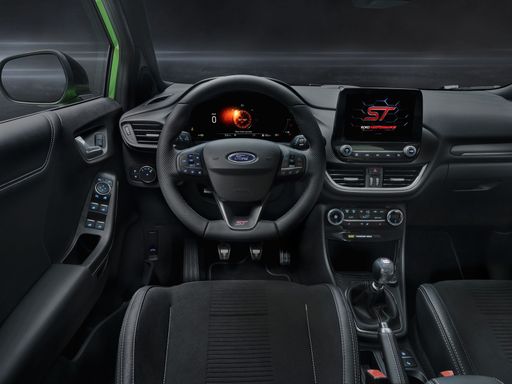 @ puma.fordpresskits.com
@ puma.fordpresskits.com
Honda e:Ny1
The Honda e:Ny1 embodies the brand's vision for a sustainable and stylish urban driving experience. With its distinctive design and advanced technology, it offers a glimpse into the future of electric mobility. Inside, the cabin showcases a minimalist yet functional aesthetic, providing comfort and connectivity for modern drivers.
details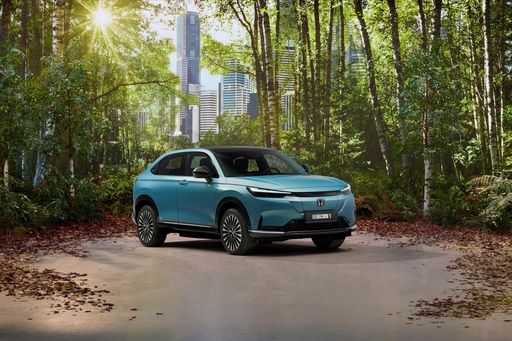 @ hondanews.eu
@ hondanews.eu
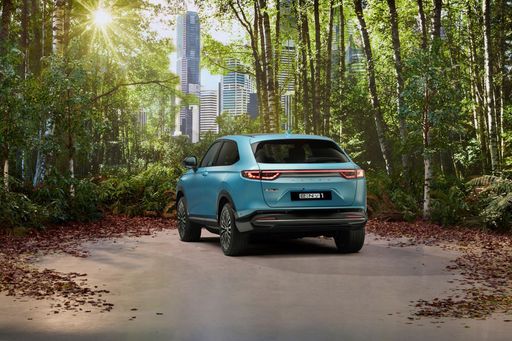 @ hondanews.eu
@ hondanews.eu
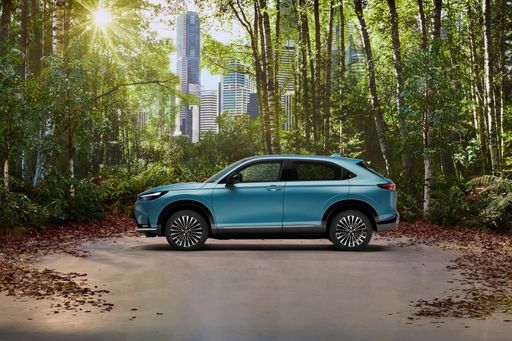 @ hondanews.eu
@ hondanews.eu
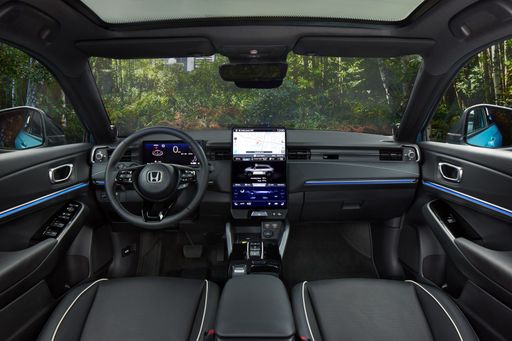 @ hondanews.eu
@ hondanews.eu

|

|
|
|
|
Costs and Consumption |
|
|---|---|
|
Price
24800 - 36300 £
|
Price
33400 - 36000 £
|
|
Consumption L/100km
5.4 - 5.9 L
|
Consumption L/100km
-
|
|
Consumption kWh/100km
13.1 - 13.9 kWh
|
Consumption kWh/100km
18.20 kWh
|
|
Electric Range
361 - 376 km
|
Electric Range
412 km
|
|
Battery Capacity
43 kWh
|
Battery Capacity
-
|
|
co2
0 - 135 g/km
|
co2
0 g/km
|
|
Fuel tank capacity
42 L
|
Fuel tank capacity
-
|
Dimensions and Body |
|
|---|---|
|
Body Type
SUV
|
Body Type
SUV
|
|
Seats
5
|
Seats
5
|
|
Doors
5
|
Doors
5
|
|
Curb weight
1316 - 1563 kg
|
Curb weight
1730 kg
|
|
Trunk capacity
456 - 523 L
|
Trunk capacity
344 - 361 L
|
|
Length
4186 - 4226 mm
|
Length
4387 mm
|
|
Width
1805 mm
|
Width
1790 mm
|
|
Height
1550 - 1555 mm
|
Height
1584 mm
|
|
Max trunk capacity
1216 - 1283 L
|
Max trunk capacity
1136 - 1176 L
|
|
Payload
367 - 469 kg
|
Payload
350 kg
|
Engine and Performance |
|
|---|---|
|
Engine Type
Electric, Petrol MHEV
|
Engine Type
Electric
|
|
Transmission
Automatic, Manuel
|
Transmission
Automatic
|
|
Transmission Detail
Reduction Gearbox, Manual Gearbox, Dual-Clutch Automatic
|
Transmission Detail
Reduction Gearbox
|
|
Drive Type
Front-Wheel Drive
|
Drive Type
Front-Wheel Drive
|
|
Power HP
125 - 168 HP
|
Power HP
204 HP
|
|
Acceleration 0-100km/h
7.4 - 9.8 s
|
Acceleration 0-100km/h
7.60 s
|
|
Max Speed
160 - 210 km/h
|
Max Speed
160 km/h
|
|
Torque
170 - 290 Nm
|
Torque
310 Nm
|
|
Number of Cylinders
3
|
Number of Cylinders
-
|
|
Power kW
92 - 124 kW
|
Power kW
150 kW
|
|
Engine capacity
999 cm3
|
Engine capacity
-
|
General |
|
|---|---|
|
Model Year
2025
|
Model Year
2023
|
|
CO2 Efficiency Class
A, D
|
CO2 Efficiency Class
A
|
|
Brand
Ford
|
Brand
Honda
|
Is the Ford Puma offered with different drivetrains?
The Ford Puma is offered with Front-Wheel Drive.
The prices and data displayed are estimates based on German list prices and may vary by country. This information is not legally binding.
